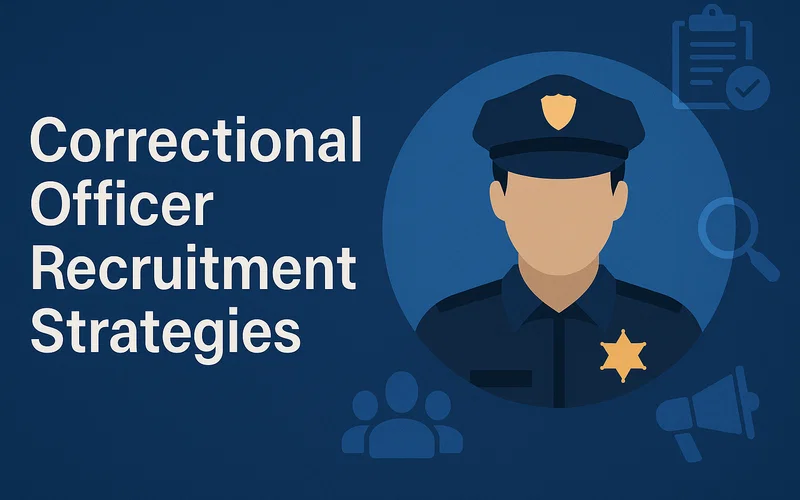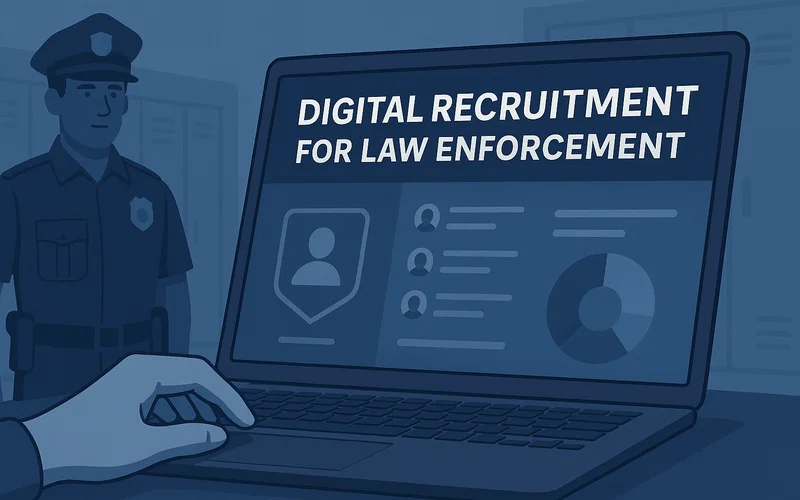
The numbers paint a stark picture. More than 70% of police agencies report increased difficulty recruiting officers compared to five years ago, and departments nationwide are operating at approximately 91% of authorized staffing levels—a nearly 10% workforce deficit. Large agencies remain more than 5% below their pre-2020 staffing levels, with some cities like Chicago short well over 1,300 officers and Baltimore needing 600 more than they have. This isn't just a staffing challenge—it's a public safety crisis demanding immediate, innovative action.
The Cost of Inaction
When departments can't fill positions, the consequences ripple through communities. Twenty-five percent of agencies have been forced to reduce or eliminate services because of staffing difficulties. Officers work exhausted, running call to call alone, creating the worst possible scenario for de-escalation and community safety. In some small towns, entire departments have disbanded, leaving residents dependent on county sheriffs.
Three Game-Changing Solutions
Streamline the Hiring Process
The traditional police hiring process is fundamentally broken. When departments take 12 months to move candidates from application to academy, qualified applicants accept jobs elsewhere. Battle Creek, Michigan proved what's possible: after simplifying their application to allow direct text or call connections with recruiters, they received 95 applications in 90 days compared to just 9 using traditional methods. Other agencies are conducting "Prospect Days" where candidates complete multiple hiring stages—application, physical fitness test, written exam, and interview—in a single day.
The message is clear: eliminate bureaucratic obstacles and meet candidates where they are. Deploy technology to automate background checks, integrate data systems, and maintain consistent communication through weekly texts or emails. Departments that modernize their hiring workflows aren't just saving time—they're capturing talent that competitors lose to friction.
Build Youth Pipeline Programs
The most successful departments are thinking decades ahead by investing in cadet and youth programs that create a recruitment pipeline starting in high school. These programs provide young people aged 15-20 with firsthand law enforcement experience, training, and mentorship. Portland, Beaverton, and Eugene Police Departments all run comprehensive cadet academies where participants receive instruction in criminal law, traffic procedures, criminal investigations, and report writing while earning educational credit.
The impact extends beyond recruitment. A COPS Office report found that youth law enforcement experience programs serve as vital recruitment conduits by building connections with young people at an influential stage, helping demystify policing careers and correcting misconceptions. Cadets participate in ride-alongs, community events, and uniformed details, developing leadership skills while building relationships with officers. Programs like these foster community-oriented policing values and create ambassadors who help improve public perception of law enforcement.
These investments pay dividends: young people who complete cadet programs enter the profession with realistic expectations, established relationships, and genuine commitment to public service. Departments building these pipelines today are solving tomorrow's staffing challenges.
Embrace Digital-First Recruitment
Traditional recruiting tactics—job fairs and radio ads—no longer work. Analysis of 10,000 applicants to DC Metropolitan Police Department found that less than 1% learned about the opportunity at job fairs, while over 70% discovered it through digital advertising or referrals. The younger workforce is digital native, and departments must meet them on their platforms.
Seattle Police Department's "As You Are" campaign showcases real employees discussing what they love about the job. These authentic stories, distributed through social media and targeted digital ads, helped Seattle hire more than 150 officers in 2025—more than 2024 and 2023 combined. The department received 3,300 applications in the first three quarters of 2025 compared to 1,300 during the same period in 2023.
The Path Forward
Solving the staffing crisis requires departments to abandon outdated practices and embrace innovation. Streamline hiring to reduce time-to-hire from one year to six months. Build youth cadet programs that create sustainable pipelines of qualified, committed candidates. Deploy sophisticated digital marketing that tells authentic stories and reaches candidates where they spend their time.
The departments making these changes are seeing results. Seattle turned around what was a staffing crisis, with 2024 marking the first year since 2019 where hirings surpassed separations. The blueprint exists—now comes the execution.
Public safety depends on having enough qualified officers to protect communities. The departments willing to transform how they recruit, hire, and retain personnel will thrive. Those clinging to traditional approaches will continue struggling with vacancies, exhausted officers, and diminished public safety. The choice is clear, and the time to act is now.
Ready to Fill Every Vacancy?
Respond Capture helps correctional agencies recruit smarter, faster, and more efficiently. Our platform and services automates applicant communication, tracks every stage of the hiring pipeline, and delivers real-time analytics so you can stay fully staffed.
👉 Qualifying agencies can save 20% off their first-year software subscription.
Don't wait for the next staffing crisis—get ahead of it.
Schedule a demo by contacting us at contact@respondcapture.com
References
- Domestic Preparedness - Data-Driven Approach to Police Recruitment
- Lexipol - State of Police Recruitment and Retention
- Police1 - Police Officer Hiring Increases in 2023
- APB Web - Insufficient Police Staffing Continues
- Axios Seattle - Washington Police Staffing 2024
- Police Forum - Recruitment and Retention PDF
- Police1 - Rethinking Police Recruitment
- PD Recruiting - Police Recruiting and Retention
- Portland Police - Cadet Program
- Beaverton Police - Cadet Program
- Eugene Police - Cadet Program
- Police1 - Youth Programs and Law Enforcement Recruitment
- Police Chief Magazine - Working with Youth
- Seattle Police - 150 New Officers in 2025
- Police App - Community Recruitment
- Washington County Sheriff - Lateral Transfer
- DOJ - Strengthening Police-Community Partnerships
- OJPNCJRS - Lateral Entry Move Toward Future
- Police1 - Building Bridges Through Collaborative Partnerships
- Vancouver Police - Lateral Transfer
- COPS Office - Community Hiring Program
- Portland Police - Lateral Officers
- Portland.gov - Community Board Police Accountability
- Eugene Police - Lateral Police Officer
- COPS Office - Community Policing Microgrants
- Public Safety Cadets
- Portland Police - Lateral Officers Program
- NIJ - Enhancing Police Research Partnerships
- Hillsboro Police - Cadet Program



